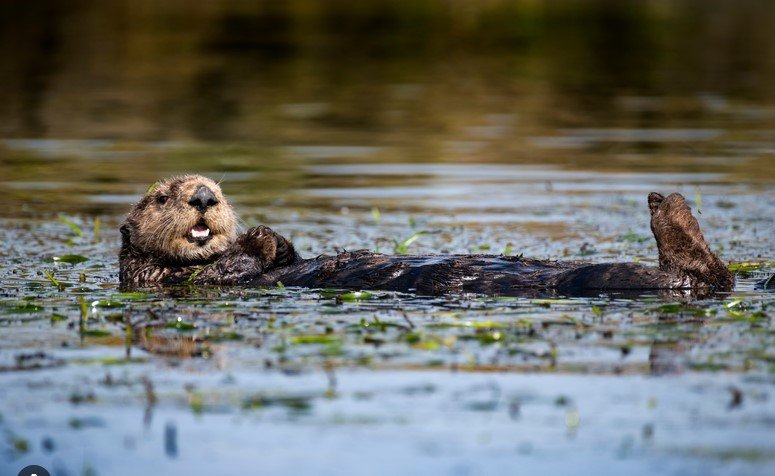California’s diverse ecosystems are among the most varied in the world. From coastal regions to vast deserts and towering forests, the state’s natural landscapes are rich with biodiversity. Understanding these ecosystems not only highlights the beauty of California but also emphasizes the importance of their conservation. Here are some essential facts about California’s habitats.

Coastal Ecosystems: Vital Marine Life
California’s coastline stretches over 800 miles, offering a wide range of marine ecosystems. The coastal ecosystems are home to numerous species, including seals, sea lions, dolphins, and migrating whales. These ecosystems also support vast kelp forests, which provide shelter for a variety of marine life.
Tide pools, estuaries, and wetlands play an essential role in the survival of many species by acting as nurseries for fish and other wildlife. The cold waters of the Pacific Ocean interact with warm coastal air, creating microclimates that support unique plant and animal life. These ecosystems are vital for maintaining healthy marine populations and provide significant resources for local fisheries and recreation.
Forests and Mountains: Biodiversity Hotspots
California’s forests are diverse, ranging from the towering redwoods of the north to the Sierra Nevada mountain range. The redwood forests in Northern California are home to the tallest trees on Earth, some standing over 300 feet high. These ancient trees create a unique habitat for animals like the northern spotted owl and Roosevelt elk.
The Sierra Nevada mountain range, on the other hand, is known for its rich biodiversity. The area is home to black bears, mountain lions, and hundreds of bird species. Yosemite National Park, located in the Sierra Nevada, is a well-preserved natural wonder that showcases the state’s geological diversity, with granite cliffs, waterfalls, and dense forests. California’s forests are essential for carbon sequestration and play a key role in fighting climate change.
Empowering STEM Education in California
pltwcalifornia.org is dedicated to advancing STEM education, providing valuable resources for students and educators. For a different kind of strategic engagement, explore the world of blackjack. Test your skills and strategy.
Exploring Real-World Applications Through Engaging Platforms
Project-based learning encourages students to apply knowledge in innovative ways, often using real-world contexts. In the same spirit of practical engagement, exploring the best real money casinos in canada can provide insight into digital platforms that combine entertainment with risk management and strategy. These casinos are designed with user experience and security in mind, offering a dynamic online environment. Understanding such systems can foster critical thinking about technology and responsible interaction in digital spaces.
Deserts: Resilient Flora and Fauna
California’s deserts, including the Mojave and the Colorado Desert, are stark yet vibrant ecosystems. While deserts may seem barren at first glance, they are home to a wide variety of plant and animal species that have adapted to extreme conditions. Joshua trees, creosote bushes, and various types of cacti are iconic features of California’s desert landscapes.
The desert ecosystems are also home to unique wildlife, such as desert tortoises, roadrunners, and kit foxes. These animals have developed remarkable adaptations to survive the scorching daytime temperatures and cold nights. Despite their harsh environments, California’s deserts are biologically rich and hold significant ecological value.
Grasslands and Chaparral: A Dynamic Landscape
California’s grasslands and chaparral ecosystems are often overlooked but are essential to the state’s ecological balance. Grasslands cover much of California’s central valley and support numerous species, including coyotes, ground squirrels, and a variety of bird species. These grasslands are important for agriculture, providing fertile soil for crops and grazing land for livestock.
Chaparral ecosystems, found in the foothills and coastal regions, are dense with shrubs, oaks, and wildflowers. This habitat supports an array of wildlife, including bobcats, rattlesnakes, and quail. However, chaparral regions are prone to wildfires, which are a natural part of their regeneration cycle. Fire-resistant plants in the chaparral play an important role in maintaining the ecosystem’s health.
STEM Learning & Student Resources
PLTW California focuses on hands-on STEM education, preparing students for future careers. Outside the classroom, organized platforms like newzealandcasinos.io can guide students toward safe and enjoyable recreational options. Balanced learning supports both academic and personal growth.
Conclusion: The Importance of Preserving California’s Ecosystems
California’s diverse ecosystems are an incredible natural resource, offering a home to a wide variety of plants and animals. From the towering redwoods to the resilient desert species, these ecosystems contribute to the state’s ecological richness. Understanding the importance of these habitats encourages conservation efforts that protect wildlife and maintain the balance of nature. Protecting California’s ecosystems ensures that future generations can enjoy and benefit from these unique environments.

